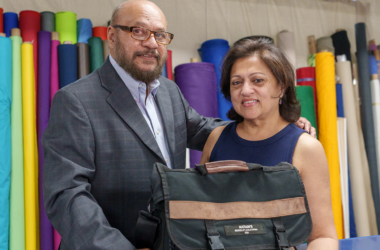Kanlaya Palivan wants to honor her native cuisine, which she says is too often lumped together with Thai food in the Bay Area restaurant landscape.
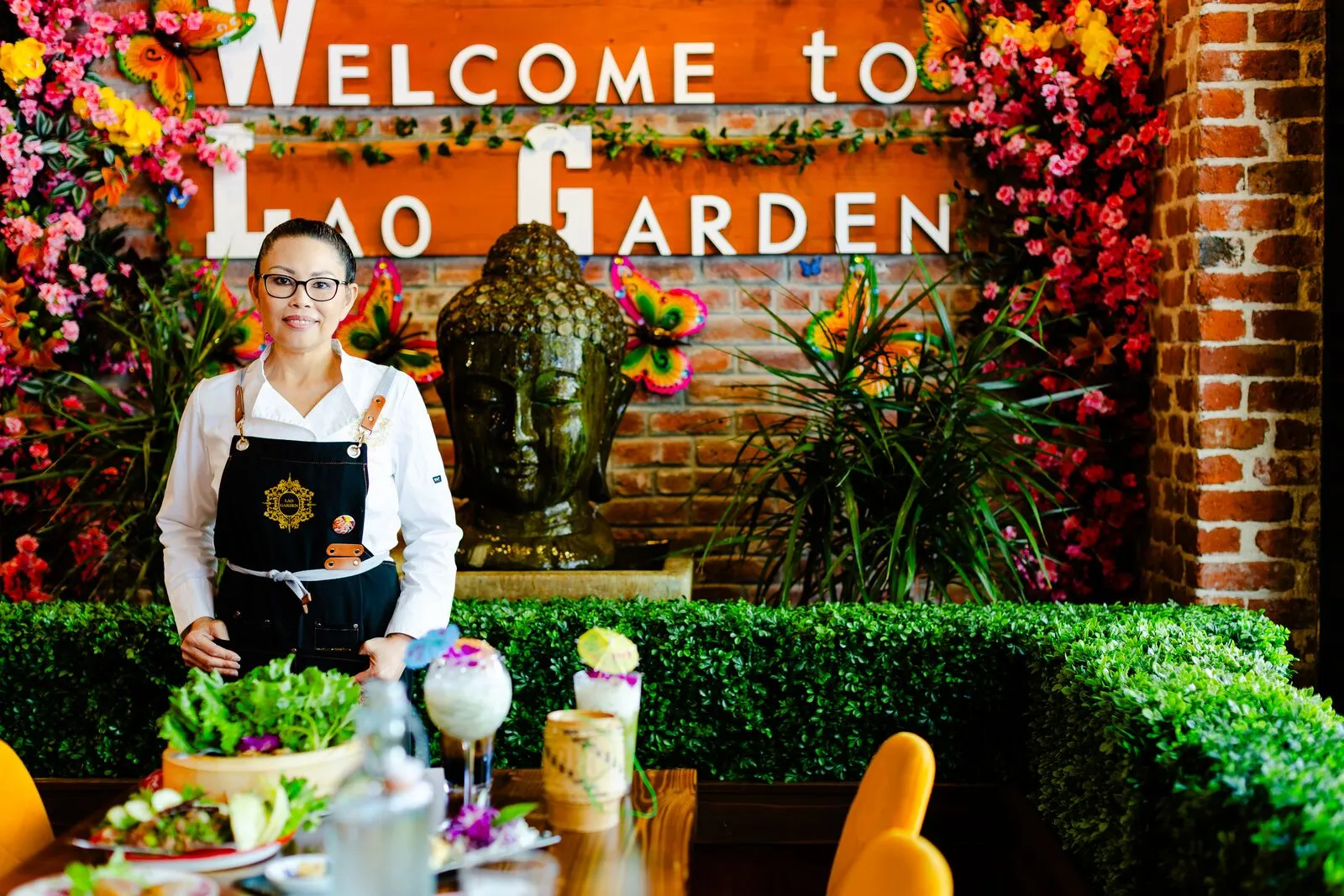
August 6, 2025
BERKELEYSIDE — Kanlaya Palivan grew up in Wichita, Kansas, which holds the distinction of being the birthplace of Pizza Hut.
Palivan, who was born in Laos but emigrated to the U.S. with her family when she was young, admits that as a young girl she frequented Pizza Hut and McDonald’s, and grew accustomed to the bland American food that all her friends loved. But her tastebuds were living a double life, as she also relished the boldly flavored dishes that her mother cooked at home.
When she got a little older, she started exploring different cuisines, but it was only when she became a mother herself that she realized how important it was to her to celebrate the food of her culture.
She had never been to a Lao restaurant, but a seed was planted in her mind.
Palivan opened Lao Garden in West Berkeley in January to honor and share her native cuisine, which she feels often gets overshadowed by the food of its bigger neighbor, Thailand. The Bay Area is home to several restaurants that bill their fare as “Lao Thai.”
“Actually, I know some of their owners are from Laos, but they feel Thailand is a better-known destination,” Palivan said. “Everyone is familiar with Thai food. Also, Lao people of the older generation are modest and humble and don’t want to boast about how great Lao food is. Plus, it is very time-consuming to make.”
Her restaurant, in the former home of Italian restaurant Paisan, “is not about bragging,” however. Rather, Palivan said her goal is is to “educate people about our culture and our food. There is a Lao community; we’re here.”
Lao Garden’s walls are bedecked with multicolored flowers and butterflies, and gentle music plays in the background. A glance at the extensive menu may present a collection of intriguing yet unfamiliar dishes.
Laotian cuisine is multi-layered, balancing flavors with saltiness, sweetness, acidity, and umami. Herbs such as galanga, lemon grass, ginger, mint, cilantro, basil, dill, and kaffir lime leaves are essential. Sticky rice is preferred. One classic dish, thum lao lao, is a shredded papaya salad with a thick, fermented sauce called padaek made from shrimp paste, fermented fish, crab paste and other ingredients. It is served with a wedge of fresh cabbage, a tangle of thick rice noodles and pork cracklings. Textures are essential. Another staple dish, laab, is a minced meat and herb salad, with options for minced chicken, pork, duck or beef.
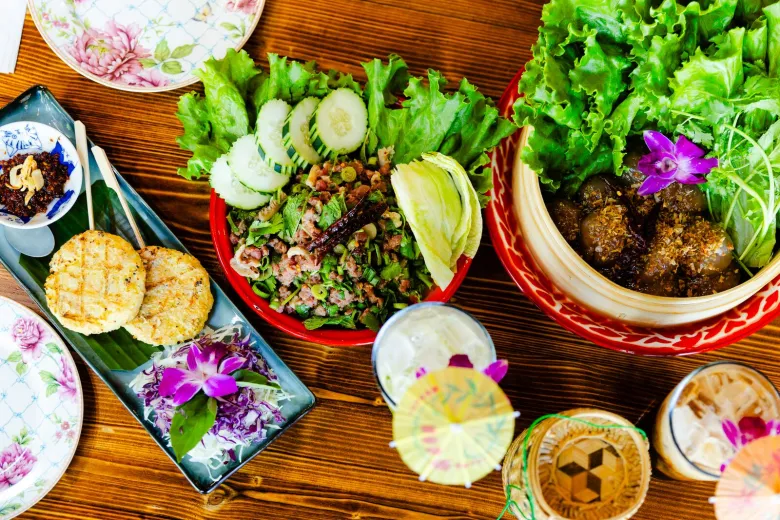
A new adventure after a career in software
Palivan remembers back when her father sponsored his siblings to emigrate to the United States from refugee camps in Thailand. It was hard being one of the first Laotian families in Wichita because they couldn’t find the right ingredients for their dishes and had to make do. ”
“Instead of sticky rice, they had to use Uncle Ben’s, and in place of papaya, my mom and some of the other ladies would use carrots to make a spicy salad, or they shredded white cabbage,” she said. “One time, I remember they used the white rind of watermelon. Once the community grew, one of our family friends opened a grocery store and that’s where we got the fish sauce and other things. I guess they imported it from California or Texas.”
After she graduated from eighth grade, the family moved to Merced, in the Central Valley. Later, Palivan attended San Francisco State, where she majored in International Business. After working in software sales for 30 years, she got tired of it and quit, ready for the next adventure.
She learned to cook from her mother. One dish on the menu, Thu Lith’s famous saikoo, pays homage to her mother’s cooking skills. Saikoo are puffy, chewy, petite tapioca balls stuffed with a mixture of ground pork, sweet radishes and shallots. It takes hours to prepare. Palivan remembers her mother waking up at 3 a.m. to make trays and trays of saikoo whenever friends were having a celebration, as they insisted on having her cook and cater her signature dish.

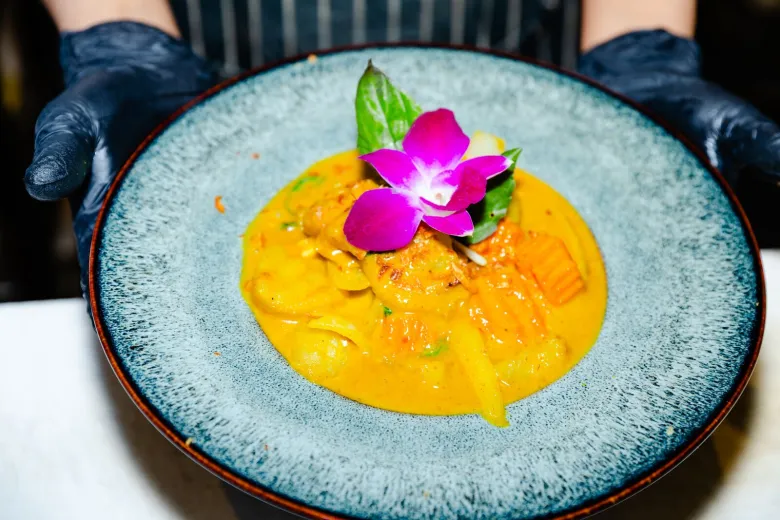
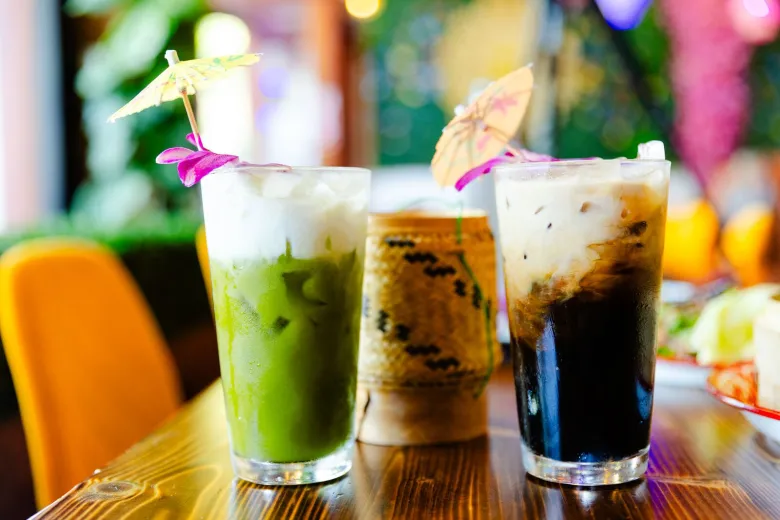
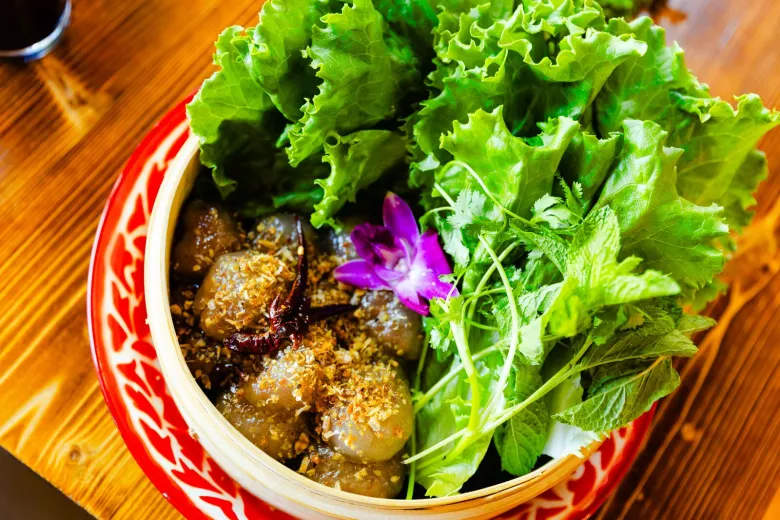
“The filling takes hours to make, you grind onions and garlic, cook it in a pot to caramelize the pork until it’s a little dry, add oyster sauce, then stand there and blend it for hours, until it is covered with the tapioca. I watched my mother make saikoo many times,” says Palivan. “We try to make it exactly like her, but we still can’t make it as perfect; she was the professional.”
Although her mother was her inspiration in the kitchen, cooking is also one of Palivan’s passions. She often entertained, and her friends were always curious. “They peppered me with questions like, ‘What are you cooking? Can we have a party at your house?’ I would cook up a storm. And I would make so much that they would always take home the leftovers. Traditionally and culturally, when you have friends over to visit, you make enough food for them to take home. “
Spicy sauces are essential to some Lao dishes, but the spice level at the restaurant is adjustable, and vegan/vegetarian options are available. The menu is 100% gluten-free (except for any added soy sauce), as wheat was not traditionally grown in the tropical climate of Laos.
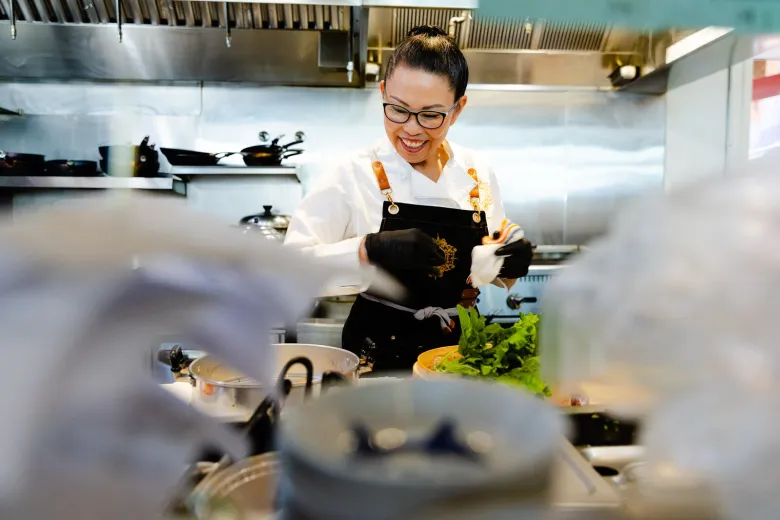
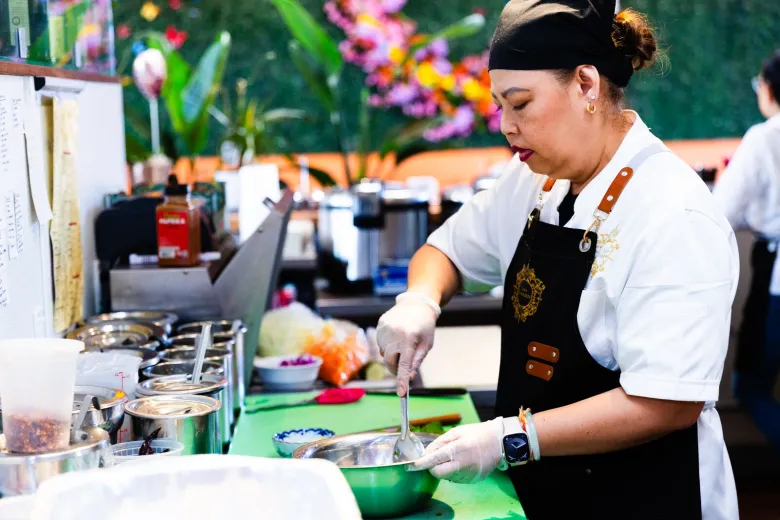
In the open kitchen, diners can watch and appreciate the cooks at work (you might even catch one of Palivan’s siblings at the stove). If she is not needed in the kitchen, Palivan is the consummate hostess, welcoming guests and graciously suggesting dishes in what may be a novel cuisine.
One sweet way to end the meal is with kao lasong, a chilled dessert that features green pandan rice noodles floating in sweet coconut milk. In comparison with Thai cuisine, coconut milk in Lao dishes is usually reserved for dessert.
On one wall, the Laotian word for hello, “Sabaidee” is framed in a giant garland of flowers.
“We wanted to create a welcoming ambiance. They say, ‘the eye feasts first,’” she said about the decor. “When people enter, even if there is no food visible, they think ‘ooh something good will come out.’ The garden theme is a way of saying: you are in an environment that is fresh and inviting.”
As for the butterflies? In Buddhism, butterflies signify freedom and purity, plus living in the present, transformation, kindness, gratitude and compassion.
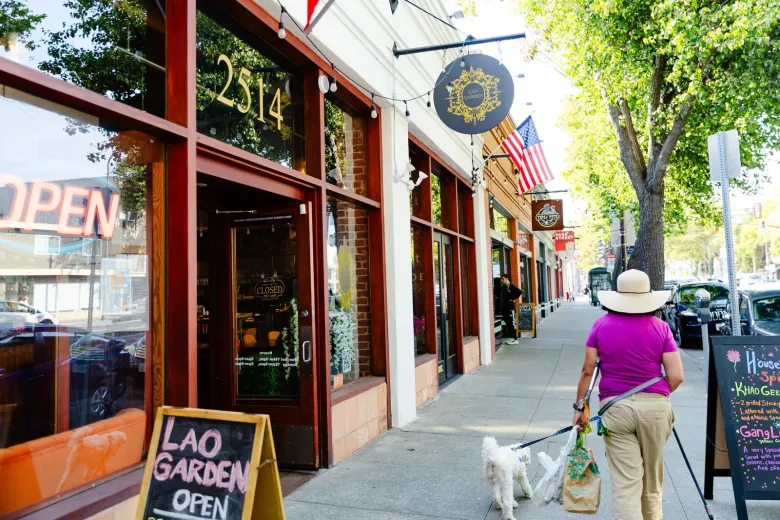
Lao Garden. 2514 San Pablo Ave. (at Dwight Way), Berkeley www.laogarden.net. Open Monday and Wednesday through Saturday, 11 a.m. to 3 p.m. and 5 p.m. to 9 p.m.; Sundays, 12 p.m. to 3 p.m. and 5 p.m. to 9 p.m. Closed Tuesdays.



